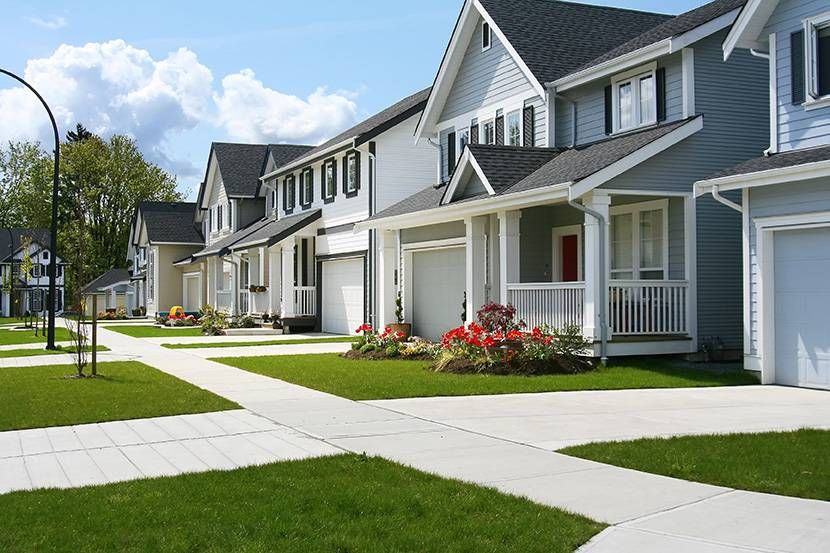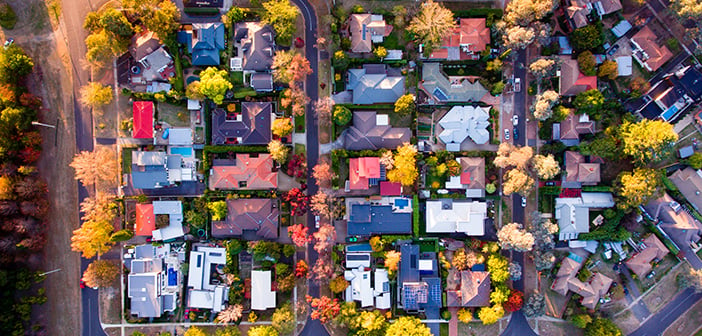Millennial Migration and What It Means for Real Estate Investors

Millennials are the generation famously indoctrinated on the belief that we can “have it all.” As the largest demographic of home buyers, 25- to 40-year-olds are starting to question their current expensive living situation and search for an alternative that offers both accessibility and affordability.
We want an economical space with the perfect charm but prefer to still be within walking distance of a good single-origin pour over and live music. As one friend recently put it, “I want to have my cake and eat it, too.” She’s searching for a modest home close to downtown, with a view.
“And affordable!” she adds. It’s not too much to ask. Or is it?
According to the recent report “Emerging Trends in Real Estate 2020,” published by the Urban Land Institute and PwC, of the people born between 1980 and 1995, a majority moved away from cities rather than toward them.
With urban housing prices skyrocketing in many popular cities, as millennials age and transition out of a demanding lifestyle, they seem to be in search of simplicity at an affordable price point.
The movement has been dubbed “hipsturbia,” and for the generation raised on the slogan “have it your way,” it’s no surprise housing demands are shifting toward a magical combination of cosmopolitan and country living. To meet the demand, there are a growing number of “hipsturbia” destinations on the map—places like Evanston, Ill., and Santa Clara, Calif.—towns where millennials can, in fact, enjoy the ideal balance of live/work/play and still afford to save for retirement.
Why are these hipster havens happening?
The Rise of 'Hipster Havens'
Affordability
No one can argue that living in a major city is expensive. Even without a car payment, the cost of public transportation on top of a pricey rent or a mortgage can easily take up 50 percent or more of someone’s take-home salary. With a mountain of student loans and daily double dairy-free lattes, it’s hard to get out of debt, let alone save for the future (which we are constantly being reminded of by our boomer parents and mentors).
Many choose to make a dent in their living expenses by sharing that cost with others—either a roommate or two (, we see you!), partner (who hopefully contributes to the rent), and/or short-term (Airbnb-style) tenants. Even retirees, who are following the same trend (out of cities and toward the burbs) are leaning into co-living, embracing what’s being called “Golden Girl” arrangements.
According to a very unofficial survey of my Instagram followers, my friends were split almost down the middle with 49 percent prioritizing affordability and 51 percent willing to swallow the expensive price of accessibility. It seems millennials are seeking more affordable apartments and mortgages—but not at the expense of living within walking distance of shopping, dining, entertainment, and jobs. We want to walk to our avocado toast and eat it, too.

Traffic and Congestion
Urban life once offered relief from car travel thanks to local transportation options, but in cities like Austin, Texas, and Denver, Colo.—where I constantly hear people say, “You have to have a car here”—the infrastructure can’t support the number of vehicles on the road. It doesn’t take too many days of sitting in gridlocked traffic to wonder if this city lifestyle you romanticized for its hip and happening vibe is all really worth it.
One of my clients, age 25, recently bought a home in the heart of Austin but shared with me the nostalgia she feels about moving back to the burbs, where she grew up.
“Amongst the pressures of being an adult, there’s something comforting and life seems a little slower and friendlier than in a big city,” Julia admitted. And I wholeheartedly agree.
Between the urban congestion, inundation with advertising and messages, constant social invitations, and dare I say "obligations," I find myself longing for a simpler lifestyle in a smaller town.
Related: Millennials Are Poised to Be the Wealthiest Generation Yet: Here’s Why
I have the privilege of living in Austin, Texas—arguably one of the coolest cities in the country, but a quick look at my internet browser history will reveal regular research of “best small cities in America” or “small hipster towns US,” looking for the next stop on my journey.
And since many of the more popular places currently pulling off the “hipsturbia” model are located near large anchor communities, such as New York City or Austin, they offer the best of both worlds. Those moving there can enjoy a quieter, more simple life, yet they can still access a night out downtown when the city they know and love calls.
Work
Driving most economic trends are work patterns and opportunities available to millennials. With a majority able to work remotely, we aren’t tied to an office or any specific geographic location.
Another friend recently told me he prefers the suburbs. It's not only because of the lower cost of living and less traffic but also because his home in the Houston burbs is actually located closer to where he works. It seems companies may be following these same trends by building campuses in more suburban areas, offering jobs where the talent lies and where their employees can enjoy a shorter commute and larger homes with a lower price tag.
Kiddos
One of the more surprising results in the aforementioned Instagram survey was the half of responders who so vehemently proclaimed “city life forever,” then admitted that having children might affect where they want to live. Like the generation before them, millennials concur that suburbs offer more space for kids to grow up in safe environments, access to better schools, and communities that reflect their own childhood.
Having children, by nature, demands additional bedrooms and square footage, which come at a premium within city limits. Turns out living on your own in the city is expensive, but trying to raise three children there is exorbitant.

What Does All of This Mean for Investors?
Like any savvy investor, you’ll want to keep your eye on the group that has the largest purchasing power. Where they go, there will be a demand for housing—both to rent and own.
While many millennials are jumping into homeownership, others who have become accustomed to the Uber “rent-not-own” mentality will choose to continue renting in the burbs, meaning there are opportunities for both buy and hold investors and flippers to make a buck off these emerging trends.
And in my opinion, the opportunities are abundant. While urban markets consistently offer great returns, I often hear investors complain they can’t afford to buy property where they live (similar to the plight of those moving out of major cities).
But have you looked outside your city limits?
Consider Suburban Investing Potential
Like any suburb, “hipsturbia” environments are anchored by larger cities. Places like New York City, San Francisco, and Chicago, where the real estate is exorbitant and out of reach for many investors, have satellite suburbs with more affordable property values. We’ve witnessed the development of Brooklyn, N.Y., and Oakland, Calif., and similar neighborhoods are springing up outside other major cities.
In Evanston, Ill., for example, residents enjoy a downtown shopping vibe, can sip a cocktail from a rooftop bar, access Chicago via public transit, and afford a home with more than 400 square feet of studio space.
Bottom line: major metropolitan markets are indeed saturated. But if just 45 minutes away is an adorable, affordable home in a safe, quiet neighborhood that mirrors millennials’ favorite spots in the city, wouldn’t you be at least a bit curious to run the numbers?
These smaller cities offer a discount from big city prices, and if this trend continues, buy and hold investors are likely to see valuable appreciation in addition to positive cash flow from rents. Thanks to supply and demand, metropolitan growth tends to have a ripple effect on surrounding towns, increasing the value of homes and neighborhoods for dozens of miles outside the city center.
Related: Study: Millennials Pay a Total of $93K (or 45% of Income) in Rent by Age 30
And for flippers, busy Instagram-focused millennials want to spend their money on a Pinterest-worthy revitalization of the perfect Craftsman home, and call it their own. By carefully observing trends and the demographics in your city, you can make design choices that will result in a large uptick in the sales price, even without a huge impact on your construction budget.
Ultimately, it all comes down to location, location, location. If you are targeting the millennial market as a real estate investor, you’ll want to consider analyzing deals on homes that offer a slice of suburban heaven and are close to (preferably walking distance from) local shops and restaurants.
As with any investment, study the trends in your local market and analyze the numbers carefully. But it’s safe to say as millennials move back home—this time not in their parents' basement—this trend will be around for a while.
Are you considering suburban investments? Why or why not?
Let's talk in the comment section below.

